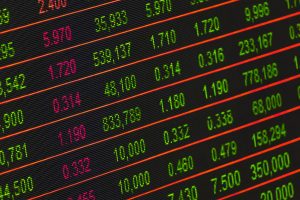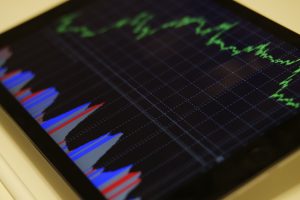The foreign exchange market, also known as Forex, is the largest financial market worldwide. It is a decentralized market, which means that there is no central exchange. Instead, a network of banks, brokers, and other financial institutions is used to conduct Forex trading. Through a trading platform, these institutions conduct electronic currency trading. Different currencies are traded 24 hours a day, and five days a week. Traders and investors from various corners of the world participate in this market, making it the largest and most liquid financial market in the globe.
Forex trading is the process of buying and selling currencies. The Forex market is where currencies are bought and sold. The demand and supply of a particular currency affect its value. A currency will rise in value if there is a great demand for it. Otherwise, the value of a currency will drop if there is a little demand for it. Forex traders buy and sell currencies with the aim of making a profit by taking advantage of fluctuations in currency values.
It is estimated that trillions of dollars are put in to the Forex market every day. Participants include commercial banks, central banks, financial institutions, corporations, hedge funds, individual traders, and governments. The main function of the financial market is to facilitate international trade and investment by enabling currency exchange between different countries. Moreover, estimating the exact daily Forex trading volume is not an easy task due to the decentralized nature of the market and the absence of a centralized exchange. Instead, market participants depend on data provided by trading platforms, brokers, and financial institutions to estimate the daily trading volume. However, according to Central Bank Survey of May 2023, the Forex market size is $8.04 trillion daily average turnover in the last year.
The daily turnover in the Forex market can be calculated by adding up all of the trades that are conducted in a day. Trading between banks and their clients, and deals between traders all fall under this category. To determine the daily turnover in the Forex market, the Bank for International Settlements (BIS) gathers information from central banks and other financial organizations.
A lot of money moves in and out of the Forex market every day because it is such a highly liquid industry. This makes it easy for traders to buy and sell currencies quickly and at a fair price. The high liquidity of the Forex market also means that traders can trade large volumes of currency without affecting the price of the currency.
The Forex market is also a highly volatile market, which means that there is a lot of price movement in the market. This volatility can present risks to traders as well as opportunities for them to make money. To protect their money, traders must be aware of the risks associated with Forex trading and employ risk management techniques.
Conclusion
The Forex market, with an average daily transaction of $7.2 trillion, is the biggest financial market in the world. The Forex market is an important industry to the world economy. It promotes international trade, makes investments easier, and offers opportunities for speculating and risk management. The market’s expansion and resiliency are facilitated by the continuous trading hours, significant liquidity, and ever-increasing internationalization, which draw a wide range of participants. It presents tremendous liquidity and volatility chances for traders to benefit while also posing risks. To properly navigate this complex financial environment, traders should approach Forex trading with caution, be aware of the risks that involved and implement effective risk management measures.






